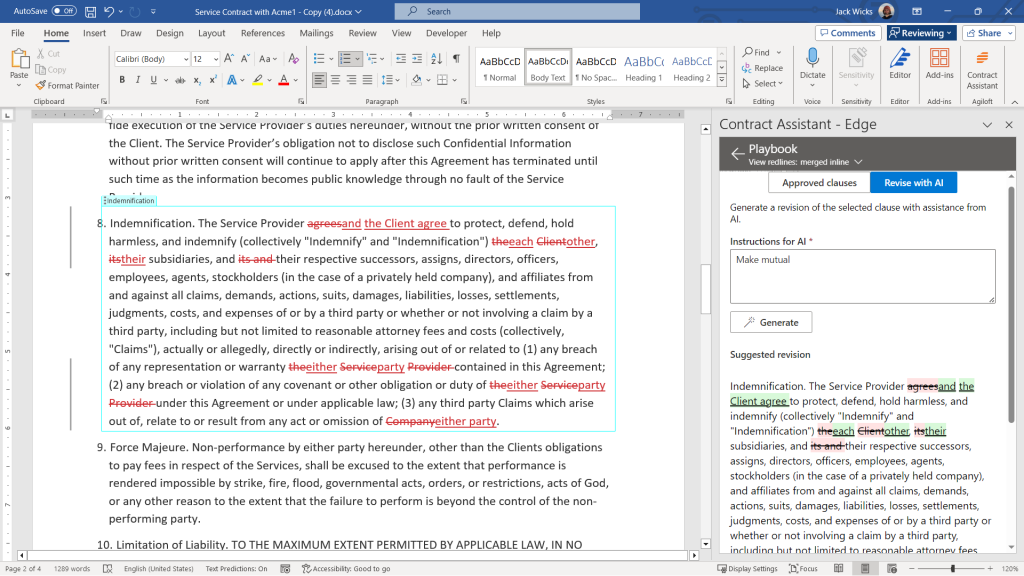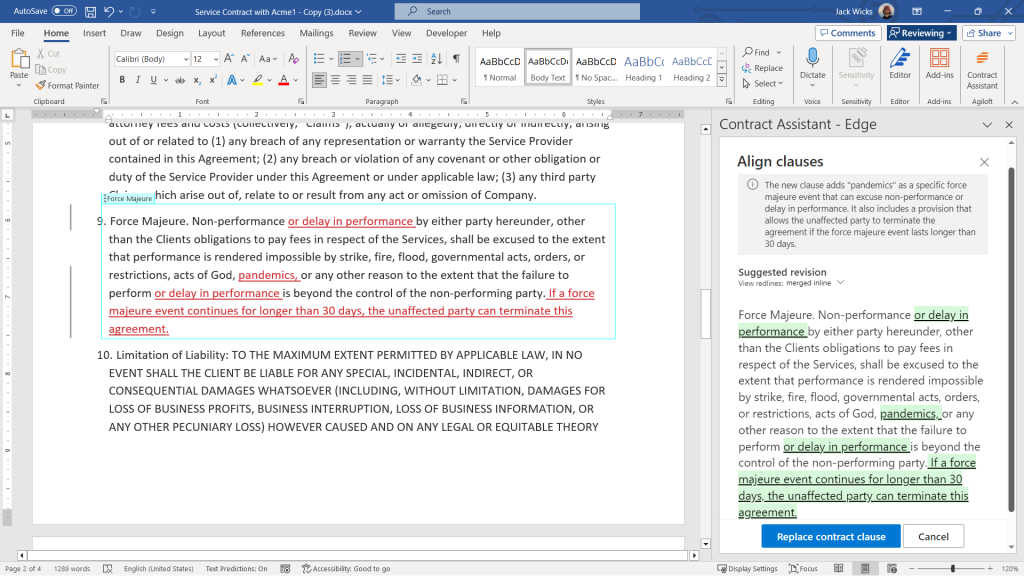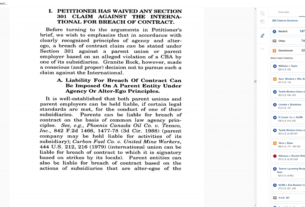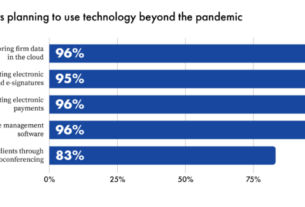Redlining is the bane of contract negotiations. The back-and-forth between the parties can drag on and on as they seek to arrive at language on which they both can agree.
Even before the advent of generative AI, several contracts technology products sought to streamline this process — most typically by comparing a draft received from a counterparty with a company’s own contracts playbook and substituting the company’s preferred language for that proposed by the counterparty.
But that gets you only so far. All you are doing then is replacing the counterparty’s preferred language with your preferred language and bouncing it back to them, like a game of contracts Pong.
What if generative AI could shortcut this back and forth and move the parties closer to a meeting of the minds?
That is exactly what a new AI feature released today from the contract lifecycle management company Agiloft purports to do. Rather than simply replace the counterparty’s language with your own, it attempts to identify the areas of misalignment between the parties and then redline the draft in a way that brings the two versions closer together.
With today’s release, Agiloft will make the product available on an early-access basis to selected customers. It will release the product for general availability in February.
Aligning Misalignments
The new capability works within Agiloft’s Contract Assistant for Microsoft Word add-in. It uses generative AI, Agiloft says, “to understand approved clauses, review third-party contract language for areas of misalignment, and then compose redlines that marry third-party contract language with legal’s preferred phrasing.”
“Contracting is a multidisciplinary activity within an organization, but we’re targeting the negotiators of the contract sets, people within the legal team, perhaps people within the procurement teams, that have responsibility for contract negotiations,” Andy Wishart, Agiloft’s chief product officer, told me during a demonstration ahead of today’s release.
“The goal is to really deliver faster review cycles, because we’d be cutting down on the manual steps of redlining, and also lowering risk, because the goal of this is to align a contract with the standards that have been set within an organization,” Wishart said.
Agiloft already had the ability to extract key data points and clauses from contracts and show how a clause in a draft contract compares to the company’s clause library. Where clauses misaligned, the company could replace the counterparty’s with its own.
But simply swapping out their clause with yours is “a bold move,” Wishart says. “It’s not negotiation, it’s just trying to force a particular position.”
“What would better,” he says, “is could we use technology like generative AI to better align these clauses to make some surgical insertions and deletions into the original, to better align what the counterparty is proposing with our standards. And that’s where gen AI redlining comes in.”
Redlines, Explained
When the user asks this new tool to align the clauses, rather than replace one with another, it redlines the clause to make the two better align with each other, and it also gives explanations of what it has done.
The user gets a preview in a panel to the right of the document showing what the AI suggests. The user can accept or edit it as the user wishes, and it is then inserted into the document as a redline.

Describe the nature of the revisions you want to make, and Agiloft’s generative AI will suggest redlines.
Agiloft’s new feature can also be used when the company does not have a standard clause. In such a case, the user can simply describe the nature of the changes, and the generative AI will suggest redlines.
In an example demonstrated by Wishart, the user wanted to change an indemnity clause to a mutual indemnity clause. The user instructs the AI, “Make mutual,” and the AI comes back with various insertions and deletions to accomplish that.
Wishart said the product is best used for longer clauses with substantive differences. For short clauses or those requiring only a few minor edits, the user is better off doing it manually.
But in substantive negotiations, where there are significant differences between the clauses, “it’s providing some surprisingly good and meaningful insertions and deletions.”
Last year, Agiloft launched ConvoAI, which was designed to enable users to “have an interactive conversation with their contracts by asking questions in natural language.” More recently, it released AI Trainer, which provides a no-code training capability that enables non-technical users, including subject matter experts and legal professionals, to train AI models on the unique clauses and key terms specific to their organization or industry.
The redlining feature it released today, it says, it the first in a series of generative AI features on its roadmap for 2024.


